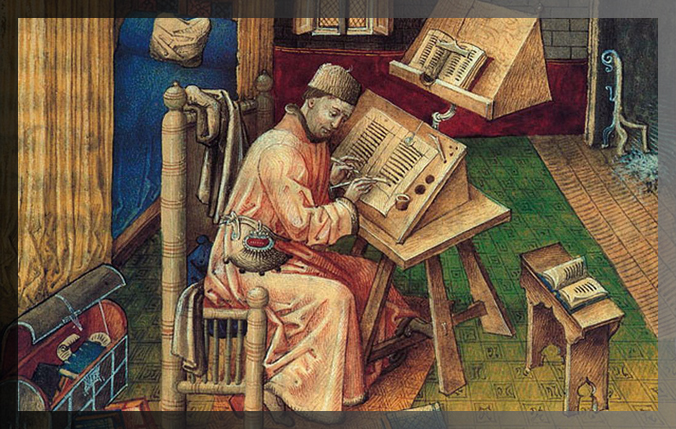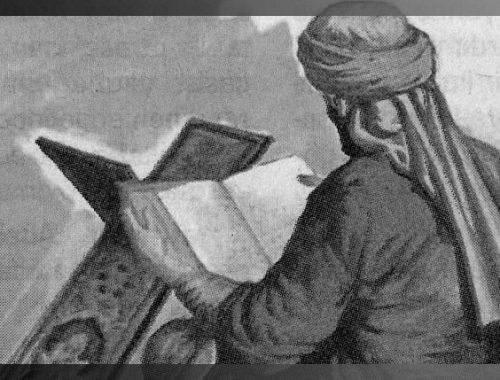
REASONS FOR ADDING TO THE ESTABLISHING RELIGION AND FOR INVENTION OF HADITHS
10) FABRICATIONS RESULTING FROM INTERPOLATIONS INTO THE RELIGION OF STORIES FROM OTHER RELIGIONS
This subject may be studied in two sections: the first section will deal with people who deliberately invented stories with a view to corrupting religion rendering it illogical or transforming it to fit one’s own faith. The second section is related to those people who felt obliged to bring into Islam their former creeds and customs before conversion into Islam. Jewish parables, Christian legends, pagan customs and the shamanic concepts of the Turks were introduced into Islam either as hadiths or canonical jurisprudence. In terms of the space they occupy, the Jewish legends have a larger space compared to Christian ones. The legends inherited from other religions dating far back in history infiltrated Islam as they found it easier to have access. We shall confine ourselves to the former ones.
Kab al Ahbar, Wahb b. Munabbih and Abdullah b. Selam were the prominent figures that brought into Islam the Jewish legends. In speaking for the foremost fabricators of hadiths we shall take up this point to show how much Jewish sources can be dependable. One thing is certain: some Muslims saw no contradiction in narrating these legends along with the Quranic verses. This is one of the reasons that inflated the volume of hadiths. In a great many hadith books and the commentaries, we often come across invented stories ascribed to these people. Let us give two examples to illustrate this. The hadiths whose origins go back to Jewish lore transmitted by Wahb Munabbih run like this: “The people of Bayt ul Makdis are God’s neighbors. God takes special care not to grieve His neighbors. Those who are buried in Baytul Makdis are spared from the ordeal of a grave.” Another fabrication attributed to Kab al Ahbar, mentioned in the commentary of Kurtubi, runs as follows: “When God created it, the sky said: ‘God has created no greater entity than me.’ And it proudly swayed to and fro. God caused it to be encircled by a snake with 70,000 wings, each of which having 70, 000 feathers. Each feather had 70,000 faces. Each face had 70,000 mouths. Each mouth had 70,000 tongues. Its tongues repeated God’s name every day as many times as there are raindrops, leaves of trees, grains of sand and pebbles, the days of the world and the number of angels. The snake coiled around the sky and the sky could attain only half of it. Only then did the sky begin to be modest.”
On the other hand, Tamim ed Dari and Ibn Jurayj may be held responsible for the interpolations into Islam of stories of Christian origin. The second coming of Christ, the Antichrist, the Angel of Death and heaven and hell may be traced back to Christian legends. (In Chapter 20, we shall tackle the problems given rise to in Islam by the Second Coming of Christ and Mahdi and the Antichrist.)
The traditionalist fundamentalists, furious at the Muslims who based Islam exclusively on the Quran, are mad at the researchers who preach the unreliability of the hadiths. Regardless of the intention of these researchers, what concerns us is the scholarly value of their work. These people who had adopted an unbiased approach, which is inexistent in Muslim communities, have incontestably put forward serious facts, meat for thought. We must adopt an impartial attitude toward their work, find out their mistakes, if any, and try to benefit from their discoveries. Among these, we must especially single out the works of Goldziher, Schacht, van Kramer, Sprenger and Dogi. Goldziher, the most renowned scholar among them, says: “The sayings of Jewish and Christian scholars, the quotations made from the gospels, the doctrines of Greek philosophers, the literary extracts of Persian and Indian origin, etc. have infiltrated Islam. All these, directly or indirectly became integrated into Islamic culture. A great many religious parables have found their way to Islam. If we examine the material used in the hadiths and Jewish culture, we observe the extent of them in Islam” (Goldziher, Al Akida Wes Sharia).
Turn to the First Page of the Article
PAGE 2: 1) FABRICATIONS WITH THE INTENTION OF ADULTERATING THE RELIGION
PAGE 3: 2) FABRICATIONS BY DISSIDENTS
PAGE 4: 3) FABRICATIONS BY THOSE WHO THOUGHT THAT THE REVELATION NEEDED TO BE SUPPLEMENTED
PAGE 5: 4) FABRICATIONS TO MAKE RELIGION ATTRACTIVE TO PEOPLE
PAGE 6: 5) FABRICATORS WHO TRIED TO JUSTIFY THEIR SECTS AND IDEAS
PAGE 7: 6) FABRICATIONS UNDER PRESSURE
PAGE 8: 7) FABRICATIONS BY SEEKERS OF MATERIAL GAIN
PAGE 9: 8.) FABRICATORS, SEEKERS OF SPIRITUAL ADVANTAGE
PAGE 10: 9) FABRICATIONS TO GIVE A PLACE FOR TRADITIONS AND CUSTOMS IN RELIGION
You May Also Like

ATTITUDE OF THE FOUR CALIPHS TOWARD THE HADITHS
10:30 pm
WOMEN IN THE QURAN AND IN THE FABRICATED RELIGION
8:45 pm

